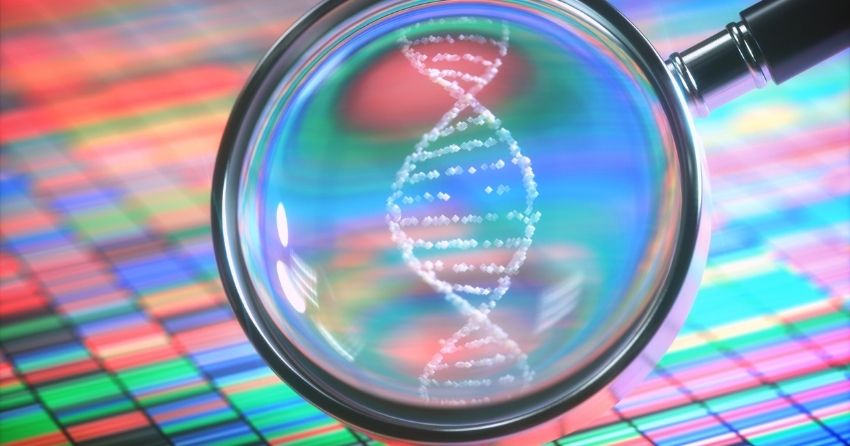Revealing the Genetic Signature of Aging: Researchers Detail the Tissue- and Cell-Specific Changes in Gene Activity With Age

Aging is characterized by a progressive decline in the function and health of all of our cells and tissues. From the heart to the brain to the kidneys and more, age-related changes to our organs are responsible for the development of everything from cardiovascular disease to cognitive decline. While longevity researchers have uncovered several hallmark characteristics of aging, the increases or decreases in gene activity that accompany aging have yet to be fully understood.
In a recent study published in eLife, researchers based out of Stanford University aimed to gain better insight into these underlying changes in gene activity that occur with aging. Authored by Zhang and colleagues, this research team sequenced over 300,000 cells from 23 tissues and organs from mice of diverse ages, compiling the genetic information into a comprehensive dataset. In this study, Zhang and colleagues pinpoint tissue- and cell-specific genes that change with age, revealing one of the most extensive analyses to date of the mammalian aging process — and, with that, aiding future research on how to prevent or treat age-related diseases.
Uncovering the Atlas of Global Aging Genes
To assemble this huge dataset on gene activity, the research team sequenced genes from 16 male and female mice, with equivalent human ages ranging from 20 to 70 years. Across the 23 different tissues and organs, they identified genes that were altered during the aging process. The researchers coined these genes as global aging genes (GAGs) because the activity of these genes was found to vary substantially with age — either increasing or decreasing in activity — across the majority of tissues and cells.
Many of the GAGs exhibited bimodal effects — meaning, with age, the gene’s activity was either entirely upregulated or downregulated across all tissue and cell types. Due to the bimodal activity and consistent responses of these genes with increasing age, Zhang and colleagues suggest that GAGs could be used as aging biomarkers across various cells, tissues, and organs.
There was also significant overlap between this mouse dataset and age-related human genes that have previously been sequenced. These genes that were altered with age involved cellular metabolism, apoptosis (programmed cell death), the function of our cells’ energy powerhouses (the mitochondria), and cellular senescence — the irreversible growth arrest of cells that leads to inflammatory damage. In addition to their similarity to human genes, the GAGs also overlapped with genes involved in the development of Alzheimer’s disease, hypertension, osteoporosis, Huntington’s disease, and several types of cancer, further suggesting that this comprehensive genetic dataset could help to advance current research on the treatment of age-related diseases in humans.

Keeping Score of Cell Age
After pinpointing the global genes that aging mice tend to share, Zhang and colleagues developed an aging score for each cell type. Know as the GAG score, this cumulative aging index uncovered that cells in different tissues and organs within the same animal age at varying rates. While a smaller GAG score would reflect slower rates of aging, a larger score suggests that the particular cell type is more sensitive to the effects of aging compared to other cells in the same animal.
Two cell types that exhibited the highest GAG scores were immune and stem cells found in adult tissues. Both of these cell types are known to alter substantially with age — the reduced activity of immune cells is seen with older adults’ increased susceptibility to infection, while decreased stem cell function reduces tissue regeneration and repair with age. The research team also found that the GAG score was significantly associated with the chronological age of the cell. This indicates that the global aging score is a suitable predictor of biological age, which measures the internal age of cells rather than the chronological-based age of when they were ‘born.’
Conversely, tissue-specific cells that perform a distinct function for an organ — known as parenchymal cells — had lower aging scores, suggesting that these specialized cells are more resilient to aging. In this study, the parenchymal cells with lower GAG scores were the pancreatic cells, neurons, heart muscle cells, and liver hepatocytes.
Opening Doors for Gene-Based Longevity Research
With these results, Zhang and colleagues hope that gene-based global aging scores will be able to better predict cells’ true biological age and allow for improved biological and age-based research in mammals. The results from this robust dataset get us one step closer to fully understanding which genes are most affected by the aging process — and, with that, how the knowledge of altered gene activity can help to mitigate both aging itself and advance the treatment of age-related diseases.
And, with the differences in age-related gene activity between cells and tissues in the same animal, this study opens doors for longevity researchers to better understand which organs age faster, and why. "Taken together, our results provide a characterisation of aging genes across a wide range of tissue-cell types in the mouse," concludes senior author James Zou. "In addition to providing new biological insights on the aging process, this work serves as a comprehensive reference for researchers working in related fields."
References:
Zhang MJ, Pisco AO, Darmanis S, Zou J. Mouse aging cell atlas analysis reveals global and cell type-specific aging signatures. Elife. 2021;10:e62293. Published 2021 Apr 13. doi:10.7554/eLife.62293





